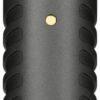Rode Procaster Dynamic Microphone Review Exceptional Broadcast Quality for Podcasts and Voiceovers
Rode Procaster Dynamic Microphone Review Exceptional Broadcast Quality for Podcasts and Voiceovers
- Exceptional ambient noise rejection ensures clear audio even in noisy environments.
- Built-in internal shock mount significantly minimizes handling noise during use.
- The sound quality feels precise and natural, perfectly tailored for vocal performance.
- Durable metal construction provides a solid, long-lasting build ideal for frequent use.
- Internal pop filter effectively reduces plosives, enhancing vocal clarity.
As an Amazon Associate I earn from qualifying purchases.
Description
Exceptional Build Quality and Design
I’ve used quite a few microphones over the years, and the Rode Procaster Broadcast Dynamic Vocal Microphone immediately stood out for its robust and professional build. The metal construction feels solid in hand, making it clear this microphone is built to last. Weighing in at just over a pound, it’s sturdy without being cumbersome, and the sleek black finish exudes a professional vibe. The size is perfect for studio setups, whether mounted on a stand or attached to a boom arm. One thing I particularly liked was the internal shock mounting, which ensures that handling noise is minimized, even if you tend to adjust your mic position frequently. That feature alone saved me countless retakes during recordings.
Performance and Sound Quality
This microphone is an absolute beast when it comes to broadcast-quality sound. The high-output dynamic capsule delivers a balanced, low-impedance output, making it ideal for any voice-based application like podcasting or radio. I tested it for voiceovers and was blown away by how well it captured the richness and depth of my voice. The frequency range of 75 Hz to 18 kHz ensures that every detail, from deep bass tones to crisp highs, comes through clearly. I also noticed that it has excellent ambient noise rejection, which is a lifesaver if your recording space isn’t perfectly soundproofed. Even with a gaming console humming in the background, this mic focused solely on my voice.
Internal Pop Filter: A Hidden Gem
One feature that really impressed me was the built-in pop filter. I didn’t even need to attach an external one, which not only saves money but also keeps my setup looking clean. The internal filter effectively reduces plosives (those annoying “P” and “B” sounds), which is crucial for anyone doing voicework. I remember testing this out by deliberately exaggerating plosives, and the microphone handled it like a champ—no harsh spikes or distortions in the audio.
Key Benefits
- Broadcast-quality sound tailored for voice applications.
- Internal pop filter reduces plosives without additional accessories.
- Superior ambient noise rejection for cleaner recordings.
- Durable metal construction ensures longevity.
- Internal shock mounting minimizes handling noise during adjustments.
Areas for Improvement
Despite being a fantastic microphone, there are a few areas where it could improve:
- The sensitivity level of 56 dB might require users to pair it with a preamp or audio interface to achieve optimal results, especially if you have a quieter voice.
- It’s a corded electric microphone, which might not suit those looking for wireless setups.
- The lack of additional accessories like a dedicated stand or XLR cable means you’ll need to purchase those separately.
Target Audience
This mic is clearly designed for podcasters, voice-over artists, and broadcasters who need professional-quality audio. It’s an excellent choice for anyone working in a noisy environment, given its fantastic noise rejection capabilities. However, if you’re someone who prefers plug-and-play USB microphones, this might not be your first pick, as it requires an XLR connection and potentially a preamp for optimal performance.
Competing Brands
When comparing the Rode Procaster to its market rivals, a few names come to mind. The Shure SM7B, for instance, is a popular choice in the same category. While the Shure mic offers slightly better sound isolation, it also comes at a steeper price point. On the other hand, the Audio-Technica ATR2100x is more budget-friendly and includes USB functionality, but it lacks the rich, broadcast-quality tone that the Procaster delivers. The Rode Procaster finds a sweet spot by offering high-quality audio at a reasonable price, making it a great value for those who prioritize sound over additional features.
Bang for the Buck
Speaking of value, the Rode Procaster delivers outstanding performance for its price. While it’s not the cheapest microphone on the market, its durability, sound quality, and built-in features make it a solid investment. If you’re serious about producing professional-grade audio, this mic is worth every penny. Unlike some cheaper alternatives, you won’t find yourself needing to upgrade anytime soon, which adds to its cost-effectiveness over time.
Overall, the Rode Procaster is a reliable and high-performing microphone that caters to professionals and enthusiasts alike. It has its quirks and limitations, but the stellar audio quality and rugged build make it a standout choice in the world of dynamic microphones. Whether you’re starting a podcast, recording voiceovers, or broadcasting live, this microphone won’t let you down.
Additional information
| Audio Sensitivity | 56 dB |
|---|---|
| Item Weight | 1.06 pounds |
| Impedance | 1500 Ohm |
| Microphone Form Factor | Large Diaphragm |
| Item dimensions L x W x H | 11.25 x 2.5 x 5.5 inches |
| Power Source | Corded Electric |
| Material | Metal |
| SignaltoNoise Ratio | 78 dB |
| Hardware Platform | Gaming Console |
| Number of Channels | 1 |
| Frequency Range | 75 Hz-18 kHz |
| Frequency Response | 2E+1 KHz |
| EU Spare Part Availability Duration | 5 Years |
| Global Trade Identification Number | 00698813001118 |
| Manufacturer | RØDE Microphones |
| UPC | 698813001118 |
| Product Dimensions | 11.25 x 2.5 x 5.5 inches |
| Item model number | PROCASTER |
| Is Discontinued By Manufacturer | No |
| Language | English |






